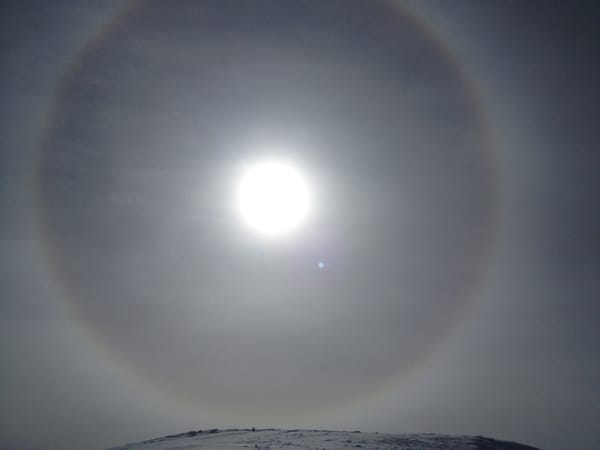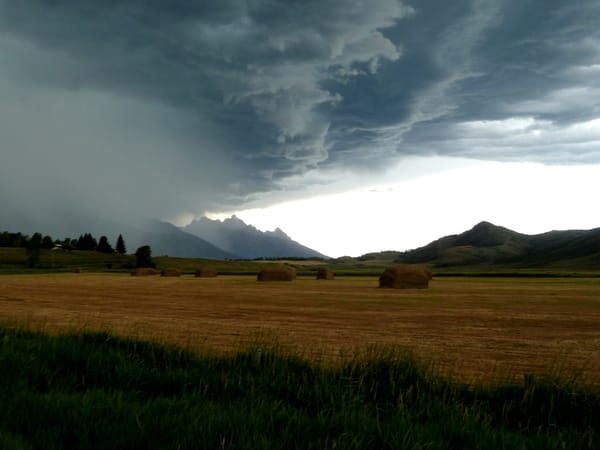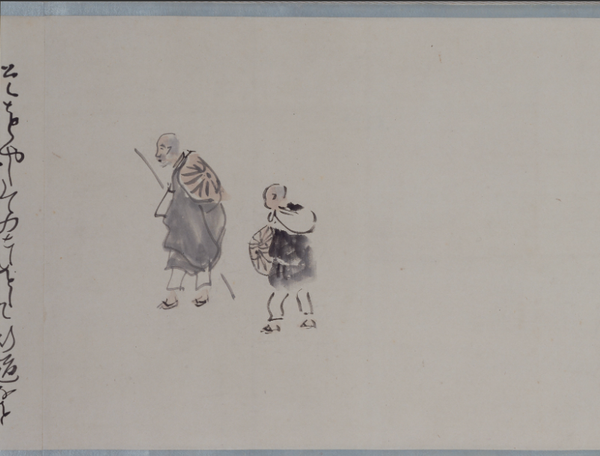The Crackle and the Buzz

Last spring, a keen young backcountry skier asked my wife and me if we’d go out on a ski tour with him. It was his last semester in college. At the top of Gobblers Knob, one of the prominent high peaks along the Mill Creek - Big Cottonwood ridgeline, graupel started pouring out of the sky. Graupel is that “pellet-like” snow formed when a perfectly beautiful six-sided snowflake goes through the ‘spin-cycle’ in the atmosphere, colliding with super-cooled water droplets (picture a snowflake in a mosh-pit) and comes out looking like a paper wad, Reuleaux triangle, or just the same snowflake wearing a fuzzy wool sweater. It’s as if ULLR has opened a million bean-bags and let gravity do its thing.

I turned and looked at College Kid.
“Do you associate spring graupel with lightning?”
“No. Should I?”FLASH! BANG!

Skins were already off. We skied downhill as fast as our poorly waxed skis would let us. Apparently ULLR invited THOR to the party.
What is it about Lightning that terrifies us? In a word, everything. We can’t outrun (outski) it, it’s impossible to anticipate exactly when and where it will originate and “strike”, and it’s accompanied by an ear-splitting crack of thunder, often preceded by The Crackle and the Buzz. The air itself seems to become alive with electricity, invisible and hidden (though not always). High in the Teton Range, I have felt like a kernel of popcorn in a microwave, waiting to pop. And…lightning is lethal. Sometimes. According to John Jensenius’s report on lightning fatalities from 2006 through 2019, “418 people were struck and killed by lightning in the United States. Almost two thirds of the deaths occurred to people who had been enjoying outdoor leisure activities. The common belief that golfers are responsible for the greatest number of lightning deaths was shown to be a myth”. As it turned out, fishermen - not skiers and climbers - accounted for the highest numbers of those whose “leisure” turned to “terror”. What I appreciated about the report is that Jensenius provided a few “Contributory Factors” that any interested party in risk and decision-making theory might appreciate:
- Vulnerability (We would call this “Exposure”) of the activity. Being outdoors any time a thunderstorm is in the area is dangerous. However, some activities cause people to be more vulnerable to a lightning strike, and, in particular, a direct lightning strike.
- Willingness to cancel or postpone activities (AKA “Commitment” or “Consistency” bias) In the busy life schedules of today's society, very few people like to alter their plans. Although many outdoor activities are canceled in advance due to a threat of steady rain, few are canceled in advance due to the threat of a potentially deadly thunderstorm.
- Awareness of approaching or developing storms Certain activities limit a person's ability to monitor conditions. In particular, any background noise may limit a person's ability to hear distant thunder from an approaching or nearby storm. Mountains, trees, or buildings may impair a person's view of the horizon and limit the ability to watch for signs of developing storms. Recent advances in cell phone technology and the availability of lightning notification services may help provide advance warning in these situations.
- Ability and willingness to get to a safe place quickly Both the inability and unwillingness to get to a safe place in a timely manner contribute to many lightning fatalities. Many people wait far too long to start heading to safety, and that puts them in a dangerous and potentially deadly situation. In fact, a number of lightning victims in this study were seeking safety when they were struck – the problem is that they just didn't start soon enough.
But there’s something else. Have you ever met someone who….changed....or claimed they changed, after a lightning strike or, more broadly, an electrical event? LSESSI - the Lightning Strike and Electric Shock Survivors, Int’l is a support group for survivors, family and friends working through the after-event. Reported impacts include persistent ear-ringing, memory issues, depression, loss of reading/writing ability, headaches and PTSD. What surprised me, however, was that a number of survivors reported a newfound sense of “Extra-Sensory Perception”, or ESP.
~~~~~~~~~~~~~~~~~~~~~~~~~~~~~~~~~~~~~~~~~~~~~~~~~~~~~~~~~~~~~~~~~~~~~~~~~~~~~
I spoke with both Dougald MacDonald, executive editor of the American Alpine Club, and the aforementioned John Jensenius. Neither were immediately aware of any winter or spring direct lightning climber/skier fatalities per se, but Jensenius did link to a bizarre lightning incident that involved snowmobilers in Maine. Go figure.
~~~~~~~~~~~~~~~~~~~~~~~~~~~~~~~~~~~~~~~~~~~~~~~~~~~~~~~~
Exum Ridge lightning fatality, summer 2003 - http://publications.americanalpineclub.org/articles/13200408400/Lightning-Poor-PositionLate-Start-Wyoming-Grand-Teton-National-Park-Grand-Teton
Grand Teton 17 people struck near the summit, summer 2010 -




